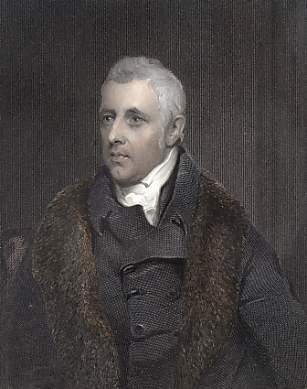
Dudley Ryder, 1st Earl of Harrowby, PC, FSA was a prominent British politician of the Pittite faction and the Tory party.

Earl of Carlisle is a title that has been created three times in the Peerage of England.

Earl Ferrers is a title in the Peerage of Great Britain. It was created in 1711 for Robert Shirley, 14th Baron Ferrers of Chartley. The Shirley family descends from George Shirley of Astwell Castle, Northamptonshire. In 1611 he was created a Baronet, of Staunton Harold in the County of Leicester, in the Baronetage of England. He was succeeded by his son Henry, the second Baronet, who married Lady Dorothy Devereux, daughter of Robert Devereux, 2nd Earl of Essex. On the death of her brother Robert Devereux, 3rd Earl of Essex, she became the youngest co-heir to the baronies of Ferrers of Chartley and the barony of Bourchier, which had fallen into abeyance on the death of the third Earl. Shirley was succeeded by his eldest son, the third Baronet. He died unmarried and was succeeded by his younger brother, the fourth Baronet. He was imprisoned in the Tower of London by Oliver Cromwell and died there in 1656. On his death the title passed to his eldest son, the fifth Baronet. He died at an early age and was succeeded at birth by his posthumous son, the sixth Baronet.

Earl of Dartmouth is a title in the Peerage of Great Britain. It was created in 1711 for William Legge, 2nd Baron Dartmouth.
Earl Fortescue is a title in the Peerage of Great Britain that was created in 1789 for Hugh Fortescue, 3rd Baron Fortescue (1753–1841), a member of parliament for Beaumaris and Lord-Lieutenant of Devon.

Dudley Francis Stuart Ryder, 3rd Earl of Harrowby, known as Viscount Sandon from 1847 to 1882, was a British peer and politician.

Earl Granville is a title that has been created twice, once in the Peerage of Great Britain and once in the Peerage of the United Kingdom. It is now held by members of the Leveson-Gower family.

Earl Cowley is a title in the Peerage of the United Kingdom. It was created in 1857 for the diplomat Henry Wellesley, 2nd Baron Cowley. He was Ambassador to France from 1852 to 1867. He was made Viscount Dangan, of Dangan in the County of Meath, at the same time as he was given the earldom. This title is also in the Peerage of the United Kingdom. Lord Cowley was the eldest son of Henry Wellesley, 1st Baron Cowley, who like his son served as Ambassador to France. In 1828 he was created Baron Cowley, of Wellesley in the County of Somerset, in the Peerage of the United Kingdom. A member of the prominent Wellesley family, Cowley was the fifth and youngest son of Garret Wellesley, 1st Earl of Mornington, and the younger brother of Arthur Wellesley, 1st Duke of Wellington, and Richard Wellesley, 1st Marquess Wellesley.
Richard Ryder was a British Tory politician. He notably served as Home Secretary between 1809 and 1812.

Dudley Ryder, 2nd Earl of Harrowby, KG, PC, FRS, styled Viscount Sandon between 1809 and 1847, was a British politician. He held office under Lord Palmerston as Chancellor of the Duchy of Lancaster in 1855 and as Lord Privy Seal between 1855 and 1858.
Dudley Danvers Granville Coutts Ryder, 7th Earl of Harrowby, TD, known as Viscount Sandon from 1956 to 1987, was a British hereditary peer who was deputy chairman of Coutts bank and its parent company, NatWest.
Dudley Adrian Conroy Ryder, 8th Earl of Harrowby, DL is a British peer. He was known by the courtesy title of Viscount Sandon from 1987 until 2007.
John Herbert Dudley Ryder, 5th Earl of Harrowby, briefly known as Viscount Sandon from March to December 1900, was a British hereditary peer and Conservative Member of Parliament.
Dudley Ryder, 6th Earl of Harrowby, known as Viscount Sandon from 1900 to 1956, was a British hereditary peer and Conservative Member of Parliament.
Nathaniel Ryder, 1st Baron Harrowby was a British politician who sat in the House of Commons from 1756 to 1776 when he was raised to the peerage as Baron Harrowby.
Thomas George Anson, 2nd Earl of Lichfield, known as Viscount Anson from 1831 to 1854, was a British politician from the Anson family.
Henry Dudley Ryder, 4th Earl of Harrowby, was a British hereditary peer.

Edward Montagu Stuart Granville Montagu-Stuart-Wortley-Mackenzie, 1st Earl of Wharncliffe, was a British peer and railway executive.

Sandon Hall is a 19th-century country mansion, the seat of the Earl of Harrowby, at Sandon, Staffordshire, 5 miles (8.0 km) northeast of Stafford. It is a Grade II* listed building set in 400 acres (1.6 km2) of parkland.
The Honourable Granville Dudley Ryder JP, was a British Tory politician.











